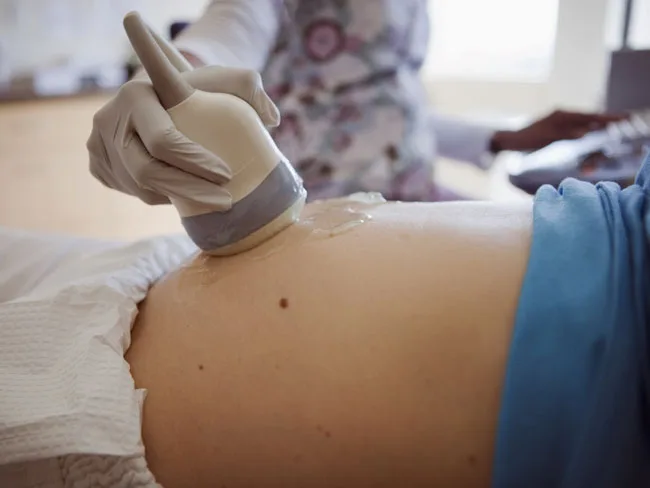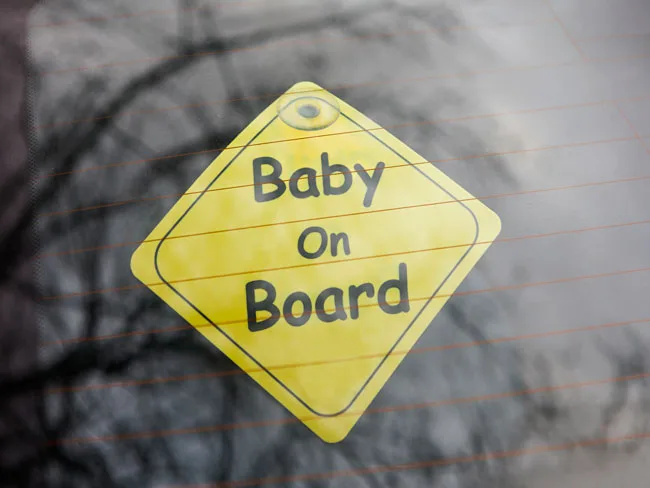Hooray! You’re expecting! Yes, you’re excited, but what happens next? Never fear – our nine-month to-do list will ease your anxieties and help you to enjoy this special time.
Pregnancy is a complete surprise for some, while for other women it’s an experience they’ve planned for years. Whichever camp you fall into, your head is likely to be swimming with all sorts of ideas and emotions now you’re finished with the baby-making part of the process.
After the initial excitement wears off, many women feel a mixture of anxiety and disbelief. For the most part, though, this will happen in the background of a busy life. Here’s a rundown of the various milestones and pregnancy appointments to check off during the next 40 weeks so you can give your baby the healthiest start in life.
READ NEXT: Is it safe to lay on your stomach while pregnant?
As soon as you know…

The minute that blue line appears and the initial shock and celebration starts to wane, take steps to ensure the best outcome for you and bub.
- Get your folate
Ideally you’ll already be taking a folic acid supplement, but if this pregnancy has caught you by surprise, start taking a 400 microgram supplement daily now. Research has shown that extra folic acid, also known as folate, in the first 12 weeks of pregnancy dramatically reduces your baby’s chances of neural tube defects including spina bifida, a condition where the spinal cord doesn’t develop properly.
READ NEXT: Is it safe to fly when pregnant?
- Visit your GP
The sooner you make an appointment to see your doctor, the quicker you can make decisions about your pregnancy care, including which hospital to deliver in, whether you’d like to be a public patient, have shared care, see mainly midwives or a private obstetrician. Your GP will be able to offer advice on this and can refer you for the scans and tests for the early stages of your pregnancy care.
- Book it in
Once you’ve decided how you’d like to have your baby, it’s a good idea to call your hospital or birth centre as soon as you can.
WATCH Dad films incredible moment his wife gives birth in a carpark. Article continues after video…
FIRST TRIMESTER: weeks 1-13
4 weeks: Wee on a stick
Home pregnancy testing kits work by measuring the level of human chorionic gonadotrophin (hCG), a hormone detected in your urine that increases from the moment of conception. Levels of hCG usually spike within a week or so of your period being late, but follow the instructions on the testing kit for the best time to test for pregnancy.
READ NEXT: Is it OK to eat spicy food while pregnant?
6 weeks: Know your due date
Your due date is calculated from the first day of your last menstrual period – not the date of conception, which generally occurs two weeks later. Add seven days to the date of the first day of your last period, then add nine months (approximately 280 days). If your maths is rusty, there are plenty of online pregnancy calculators available. Try our online due date calculator and remember, your due date is only a guide – most women won’t have their baby on their due date.
8 weeks: Dating scan
Not all women will choose to have this early ultrasound, but if you’re really confused about your dates, your midwife or GP may refer you for an early ultrasound to measure and check your baby’s development. The results will give a better indication of how many weeks along you are.
READ NEXT: Pregnant with twins?
10 weeks: Vaccination
A flu shot is free for pregnant women, as health authorities believe it’s the best way to protect yourself and your unborn baby from what can be a serious illness during pregnancy. The flu shot is safe to have at any stage of pregnancy and is recommended, especially if you’re going to be pregnant through the winter influenza season.
11-13 weeks: Nuchal translucency testing
This ultrasound combines the results of a blood test, your age and the baby’s age to estimate the chances your baby will have a chromosomal condition, such as Downs syndrome. If your risk is rated as higher than one in 300 you may be offered another test called an amniocentesis or chorionic villi sampling (CVS). Both involve having a long needle inserted into your abdomen to extract cells that can be tested for chromosomal abnormalities. These tests give an accurate diagnosis rather than a risk ratio. CVS testing is done between 11 to 14 weeks and amniocentesis is done at 15 to 18 weeks.
12 weeks: Routine appointment
By this time, you’ve probably had your first antenatal appointment with your GP, midwife or obstetrician. This is the first of many urine samples, blood pressure checks and tummy feels. You’ll also be tested for your blood type, anaemia, rubella (German measles), hepatitis and syphilis. Your healthcare practitioner will discuss with you any problems and symptoms you may be experiencing, and options for birth – including where you want your baby to be born, if you haven’t yet decided.
READ NEXT: Is it safe to use a heating pad while pregnant?
SECOND TRIMESTER: weeks 14-26
15-18 weeks: Maternal serum testing
This blood test for mums-to-be indicates whether your baby has an increased chance of having a chromosomal abnormality or cystic fibrosis. It’s important to remember that the result of this test is just a risk ratio, and only one in 50 babies who show an increased risk actually end up with the condition.
16 weeks: Book into your hospital
Now’s the time to book. Most hospitals will arrange a tour of their birthing facilities, and provide you with information regarding arrival procedures. If you’re going through the public system you’ll be booking in with midwives; if you go private, you’ll be seen by your obstetrician.
18 weeks: Tell your boss
You need to let your employer know in writing 10 weeks before you intend to take maternity leave. In your letter, you will need to include the day you intend to stop work, the week your baby is due and what length of maternity leave you’d like to take. You may need a doctor’s certificate to confirm your pregnancy and due date.
20 weeks: Morphology scan
Between 18 and 20 weeks, a detailed ultrasound will check that your baby is growing at the right rate. It will also make sure bub’s heart, stomach, kidneys and bladder are working well. You can ask about the sex of your baby, but while this visual check is usually accurate, sometimes your Samantha can turn out be a Sam!
READ NEXT: Is it safe to colour your hair while pregnant?

22 weeks: Choose a birth class
These groups can take place over a six-week period or you can do a weekend course, and are available privately or through the hospital you’re booked into. Although not compulsory, attending an antenatal class is useful as you’ll pick up plenty of information and advice, as well as meet other parents-to-be who are due around the same time as you. Look online for classes or ask at your hospital.
24 weeks: Go shopping
It’s always nice to see this on a ‘to-do’ list, but given your expanding girth and bustling bust, you really do need to hit the shops. As well as getting properly fitted for a supportive maternity bra, pop into the baby shops and start researching cots and prams.
26 weeks: Dental care
If you haven’t already done so, make an appointment to have your teeth checked. Pregnancy hormones can affect your gums, so now’s the time to sort out any dental issues because you may find it harder to visit the dentist once the baby arrives.
READ NEXT: Is it safe to run while pregnant?
THIRD TRIMESTER: weeks 27-40
27-30 weeks: Gestational diabetes
Most pregnant women are offered a glucose tolerance test (GTT) that indicates whether gestational diabetes is an issue. This non-invasive test involves visiting a pathology centre or your hospital and drinking a very sweet liquid.
28 weeks: Hospital tour
Book a tour of the hospital and labour ward where you plan to deliver. If you haven’t already made a booking for your due date, check out what’s involved. Some private hospitals require deposit arrangements before they’ll process your paperwork.
29 weeks: Install a car seat
As well as a pram, you’ll need a car seat, so start researching what will fit securely into your car. If you plan to hire one, you may need to make a reservation. Check out options online, ask your hospital for advice on services other parents have used or see our guide to car seats (here).
READ NEXT: Is it safe to drink green tea while pregnant?

30 weeks: Birth plan
By now you’ll probably have an idea of what kind of birth you’d like and be able to jot it down in a birth plan. It can be as simple or as complex as you want, and is essentially an outline of your birth wishes, including pain relief preferences, birthing positions and the people you’d like present at the birth.
31 weeks: Baby shower
A baby shower is a lovely way to celebrate a new phase of life. It doesn’t have to be too fancy, just so long as you can toast your bub-to-be with your nearest pals and family. As get-togethers of any sort will be so much harder to arrange post-baby, take every opportunity to catch up.
32 weeks: Nursery sorted
It’s good to have at least the big ticket items bought by now, such as the cot, the change table and a chest of drawers to keep all of his teeny-weeny outfits. If you’re really organised, the items might even be assembled, too!
34 weeks: Hospital bag
If you can do it, pack your hospital bag anytime from now on. You’ll need clothes for yourself and bub, along with toiletries, nappies, sanitary pads, and anything else you’d like to take with you for your labour.
35 weeks: Protect against whooping cough
One of the best ways to protect your newborn from whooping cough, also called pertussis, is to get vaccinated in the third trimester of pregnancy. Your body will create antibodies that pass onto your baby before he’s born.
38 weeks: Size it up
Have a final maternity bra fitting. Your size shouldn’t change too much from here on, although your breasts will become fuller when your milk comes in. It’s far better to be wrestling with maternity and nursing bras now than when your baby has arrived.
40 weeks: Due date
Don’t be surprised if bub arrives a little bit early or a few days late. Due dates are an indication of when your little one should be ready to enter the world, but it’s bub who decides when he’ll make his appearance.
READ NEXT: Is it safe to drink coffee while pregnant?
THROUGHOUT YOUR PREGNANCY
Antenatal Check-ups
There’ll be plenty of them, so it’s a good idea to keep track of all your appointments in a diary or electronic calendar.
After your first detailed scan (between weeks 18 and 20), antenatal visits are usually set at weeks 24, 28, 31, 34, 36, 38, 40 and 41. Depending on how your pregnancy is progressing, however, they can be more frequent.
At each visit, your midwife or obstetrician may test your urine for levels of sugar, ketones and protein. Your blood pressure will be taken, and your feet and hands examined to see if there is any swelling. The size of your uterus, called the fundal height, will be measured to assess your baby’s development. His position (how he is lying in the uterus) will be observed, along with his heartbeat and how often he is moving. It’s worth remembering that while most pregnant women will have all the scans and diagnostic tests on offer, they’re not obligatory and you can choose not to have them.
Kickboxing Champ
Your baby’s foetal movements are a key indicator of good health. As he grows and space in utero becomes an issue, his movements won’t be so pronounced – but they will still be regular. If you feel there’s been a reduction, call your midwife or doctor.
READ NEXT: Is it safe to get a spray tan while pregnant?



